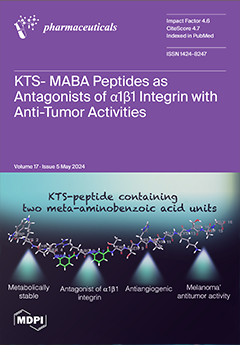Background: The inflammasome is a cytosolic multiprotein complex associated with multiple autoimmune diseases. Phytochemical compounds in soy (
Glycine max) foods, such as isoflavones, have been reported for their anti-inflammatory properties. Aim: the anti-inflammatory activity of DZ (daidzein) and EQ (equol) were
[...] Read more.
Background: The inflammasome is a cytosolic multiprotein complex associated with multiple autoimmune diseases. Phytochemical compounds in soy (
Glycine max) foods, such as isoflavones, have been reported for their anti-inflammatory properties. Aim: the anti-inflammatory activity of DZ (daidzein) and EQ (equol) were investigated in an ex vivo model of LPS-stimulated murine peritoneal macrophages and by molecular docking correlation. Methods: Cells were pre-treated with DZ (25, 50, and 100 µM) or EQ (5, 10, and 25 µM), followed by LPS stimulation. The levels of PGE
2, NO, TNF-α, IL-6, and IL-1β were analyzed by ELISA, whereas the expressions of COX-2, iNOS, NLRP3, ASC, caspase 1, and IL-18 were measured by Western blotting. Also, the potential for transcriptional modulation by targeting NF-κB, COX-2, iNOS, NLRP3, ASC, and caspase 1 was investigated by molecular docking. Results: The anti-inflammatory responses observed may be due to the modulation of NF-κB due to the binding of DZ or EQ, which is translated into decreased TNF-α, COX-2, iNOS, NLRP3, and ASC levels. Conclusion: This study establishes that DZ and EQ inhibit LPS-induced inflammatory responses in peritoneal murine macrophages via down-regulation of NO and PGE
2 generation, as well as the inhibition of the canonical inflammasome pathway, regulating NLRP3, and consequently decreasing IL-1β and IL-18 activation.
Full article






